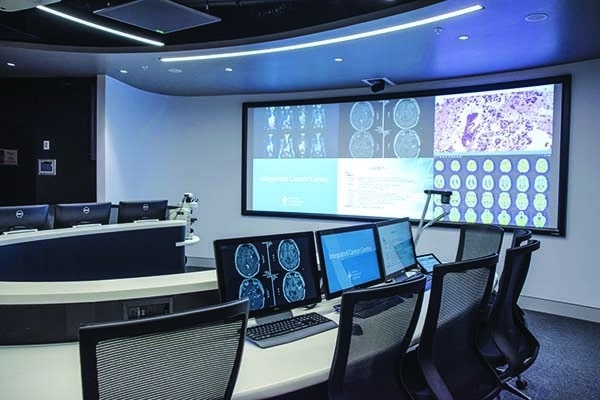How AV tech is saving lives across the globe
Sydneysiders may not know it, but a team of medical experts in the city is using AV to save lives halfway around the world. Now experts are turning to the latest in AV technology to make the next breakthrough in health and patient treatment, revolutionising medicine from the inside out.
Byline: Jason Deign
The experts are radiologists working for a European medical services provider called Telemedicine Clinic (TMC). Their job is to check medical scans and write up reports for night-time emergency patients in hospitals in the United Kingdom and Scandinavia.
As far as AV work goes, it may not sound as exciting as working on video games or live events, but it’s a lot more important: lives are at stake.
TMC’s Sydney radiologists clock on just as their counterparts in Europe are clocking off, and they fulfil a vital function in making sure key medical scans are reviewed in good time during Europe’s night shift.
While most European hospitals have an overnight skeleton staff on call for emergencies, an aging workforce and problems in recruiting radiologists have meant many medical centres risk longer-than-usual waiting times for scans to be seen.
In the UK, for example, research shows there is a need to almost double the number of full-time radiologists by 2022.
AV technology for better health
While European healthcare services grapple with this problem, TMC can at least help stave off the worst impacts on overnight patient care, so European radiologists can sleep at night. And AV technology is at the heart of the solution.
TMC has developed a proprietary AV workflow and reporting platform called the OPTEMIS Radiology IT System (RIS).
This allows high-definition scans to be sent within seconds from European hospitals to TMC’s centre in Sydney or, if needed, to radiologists working from home anywhere around the world. Radiologists review each scan on large, high-definition screens.
It’s painstaking work: missing a tiny tell-tale sign of a fracture or a tumour could have important consequences for a worried patient thousands of miles away. That’s why TMC takes no chances.
As well as handling high-quality images efficiently, the OPTEMIS RIS includes workflow tools that make it easy for radiologists to dictate clear, concise reports with voice recognition software.
Delivering results
A given proportion of cases also get passed on to another expert for a second reading. The upshot is that TMC’s radiologists don’t just deliver results that are as good as those of their peers in Europe; in many cases, the Sydney team does a better job.
It helps that TMC’s Sydney experts aren’t working through the night, so they are naturally more alert and relaxed when they check each scan. But there’s another trick that helps TMC deliver results.
It takes years of experience to become skilled at reading particular types of medical scans, but in most hospitals the radiology team just has to deal with whatever comes its way.
Because TMC deals with a large number of hospitals and cases, though, it can divide them up so that each case gets seen by the radiologist who has the most relevant experience.
This is called sub-specialisation, and thanks to OPTEMIS’s digital workflow, it assures the best available specialist is assigned for every case, independent of the location of the patient and the expert.
Patient outcomes
This means every brain scan will be seen by a neuroradiology expert, for instance, and every sports injury image will be checked by a musculoskeletal radiologist. The process improves the quality of reports and the outcomes for patients.
As a result, Alexander Böhmcker, TMC’s chief executive officer, says: “We have a virtuous circle whereby each scan gets seen by the most experienced radiologist available, and their experience improves further with each reading.”
A further benefit for TMC’s Australian radiologists, which also helps with quality, is that while they speak regularly with colleagues, family, and friends in Europe, they are free from the stresses of working in a typically overstretched health service environment.
“When I’m going back from work, or in the morning before work, it’s just so nice—the nature, the ocean, the city, and the temperature,” says Christian Weiergang, a Swedish radiologist who moved to Australia to join the Sydney TMC team.
“Almost every week I get a call from somebody in Europe, and I can just switch to camera mode and show them I’m sitting on a boat, a ferry, going from work or back home. I can show them the Opera House close up.”
-
Stay up to date with the latest news, industry insights and Integrate updates.
- Subscribe

